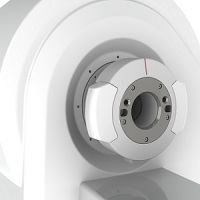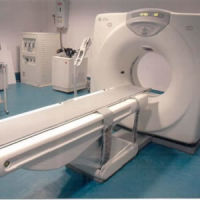An MRI scan given to men with suspected prostate cancer can help reduce rates of unnecessary biopsy by 27 percent and overdiagnosis by 5 percent, says a new study appearing in The Lancet.
See Also: Novel MRI Method Distinguishes Healthy Prostate Tissue from Cancer
It's common for men to undergo a biopsy of their prostate if they experience symptoms of prostate cancer or have a prostate specific antigen (PSA) test showing high levels of the PSA protein in their blood. Each year, over 100,000 prostate biopsies are carried out in the UK and one million are conducted in Europe. However, the PSA test is not always accurate, which means that many men undergo unnecessary biopsies.
"Prostate cancer has aggressive and harmless forms. Our current biopsy test can be inaccurate because the tissue samples are taken at random. This means it cannot confirm whether a cancer is aggressive or not and can miss aggressive cancers that are actually there," explains lead author, Dr. Hashim Ahmed, UCL, UK. The current biopsy test also can cause side effects such as bleeding, pain and serious infections, according to the doctor.
Multi-parametric MRI (MP-MRI) scans provide information about the cancer's size, how densely packed its cells are and how well connected to the bloodstream it is, so could help differentiate between aggressive and harmless cancers.
The study involved 576 men with suspected prostate cancer who were given an MP-MRI scan followed by two types of biopsy in 11 NHS hospitals. They first underwent a template prostate mapping (TPM) biopsy, which was used as a control to compare the accuracy of the MP-MRI and standard biopsy against. The second biopsy was the standard transrectal ultrasound-guided (TRUS) biopsy, the most commonly used biopsy for diagnosing prostate cancer.
The researchers reported these key findings:
- 40 percent of patients had aggressive cancer as shown in their TPM biopsy.
- Of these patients, the MP-MRI scan correctly diagnosed almost all of the aggressive cancers (93 percent), whereas the TRUS biopsy correctly diagnosed only half (48 percent).
- For men who had a negative MP-MRI scan, nine out of 10 (89 percent) had either no cancer or a harmless cancer.
Based on the results, it would be good to use MP-MRI before TRUS biopsy to identify those who have harmless cancers and do not need a biopsy immediately, according to the researchers. This group could instead continue to be monitored by their doctors, while those thought to have aggressive cancers could then have their MP-MRI scan result confirmed by the TRUS biopsy. Overall, this would reduce overdiagnosis while improving detection of aggressive cancers.
Further research is needed to assess the cost-effectiveness of this approach, how it affects hospital capacity and ensuring there are enough radiologists to conduct the MP-MRI in the NHS.
Source: The Lancet
Image Credit: Wikimedia Commons
References:
Hashim U Ahmed, Ahmed El-Shater Bosaily, Louise C Brown, Rhian
Gabe, Richard Kaplan, Mahesh K Parmar, Yolanda Collaco-Moraes, Katie
Ward, Richard G Hindley, Alex Freeman, Alex P Kirkham, Robert Oldroyd,
Chris Parker, Mark Emberton, and the PROMIS study group. (2017) Diagnostic accuracy of multi-parametric MRI and TRUS biopsy in prostate cancer (PROMIS): a paired validating confirmatory study. The Lancet.
Latest Articles
MRI, Biopsy, prostate cancer, overdiagnosis
An MRI scan given to men with suspected prostate cancer can help reduce rates of unnecessary biopsy by 27 percent and overdiagnosis by 5 percent, says a new study appearing in The Lancet.



























